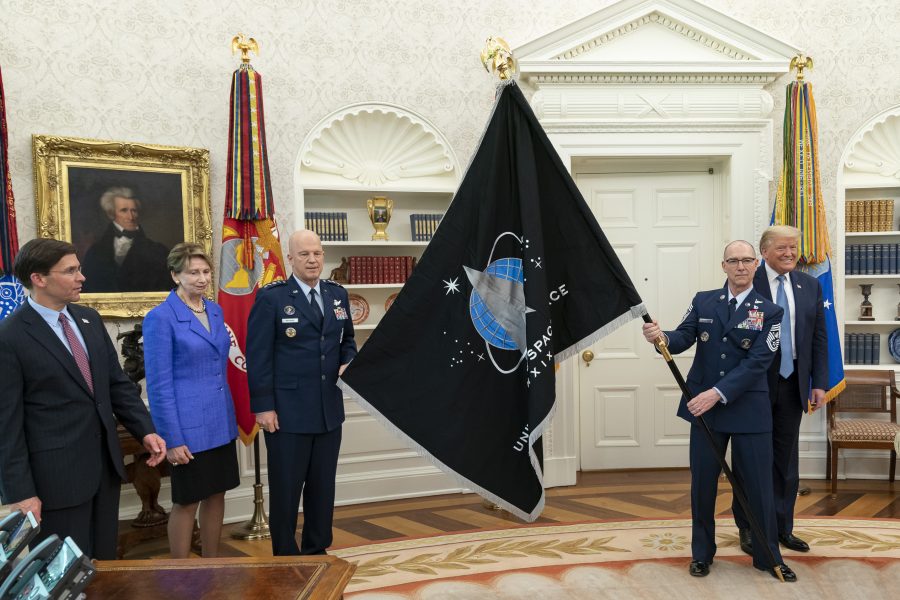Goodbye wings, hello deltas.
The Space Force announced June 30 it will organize its personnel into three levels: squadrons at the bottom, then newly named “deltas” instead of wings, and field commands at the top.
The decision is an initial step toward building the Space Force differently than the Air Force, a five-tiered bureaucracy of squadrons, groups, wings, numbered Air Forces, and major commands. Space Force officials argue a flatter organizational chart will make it more flexible than its predecessor, Air Force Space Command.
“This is the most significant restructuring of space units undertaken by the United States since the establishment of Air Force Space Command in 1982,” Secretary of the Air Force Barbara M. Barrett said in a release.
Squadrons will continue to work the same as they do in the Air Force, focusing on a particular mission like satellite operations or intelligence. They will comprise the new deltas, named for the triangular symbol often used in space logos.
A colonel will lead each delta, built to handle functions like operations, installation support, and training. People who previously worked in groups or numbered Air Forces will move to jobs elsewhere, and some of their daily tasks will be repurposed.
Another major change comes in the field commands. As previously reported, the Space Force will feature three of the umbrella organizations: Space Training and Readiness Command (STARCOM), Space Operations Command (SpOC), and Space Systems Command (SSC).
STARCOM is replacing Air Education and Training Command as the organization in charge of the training pipeline, starting in 2021. In the meantime, a colonel-run delta at Peterson Air Force Base, Colo., will oversee training and readiness.
“This unit will serve as the parent organization for a number of education, training, and operational test and evaluation units transferring to the Space Force in summer 2020,” the service said.
SpOC will offer the Space Forces’ personnel and combat resources to commanders across the globe. It will replace the existing Space Operations Command, a unit at Vandenberg Air Force Base, Calif., and include the Space Force’s staff and operations already located at Peterson.
SSC will be in charge of research, development, and acquisition and encompass the Space and Missile Systems Center, the Commercial Satellite Communications Office, and other space system program offices from across the Defense Department. Like Air Force Materiel Command, it plans to oversee military rockets, satellites, radars, and other space-related assets from creation to retirement.
Space Force field commands are slated to start opening as smaller deltas later this summer. The service did not say when its operations and materiel organizations will be fully open for business. It still has not announced what it plans to call Space Force personnel.
Created last December, the Space Force is the U.S. military’s response to the growth of commercial and military technology in space, as well as the proliferation of weapons that could threaten American space assets. It is expected to grow to around 15,000 personnel from across the Defense Department, and may eventually become a military department on par with the Air Force, Army, and Navy.
In the Senate Armed Services Committee’s version of the fiscal 2021 defense policy bill, lawmakers backed the creation of a new training and readiness command to handle doctrine and education. But senators also urged the Space Force to use as many Air Force resources as possible to cut costs and red tape.
“The committee commends the Space Force on the combined organizational model planned for the Air Force Research [Laboratory],” lawmakers added. Some AFRL employees will continue to pursue projects that benefit air combat, while others like sensors and space vehicles researchers will instead report to Space Force officials.
“By combining efforts and managing priorities of both the Air Force and Space Force, the Department of Defense achieves synchronized effects with a very limited bureaucracy. The committee recommends the use of this combined model to the maximum extent possible in places like the Air Warfare Center and the National Air and Space Intelligence Center.”
